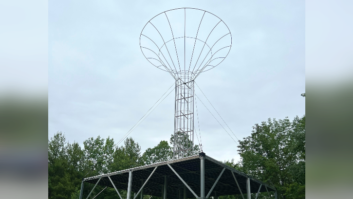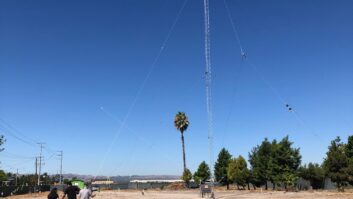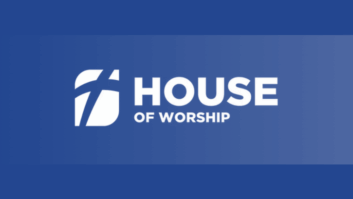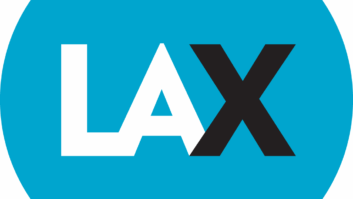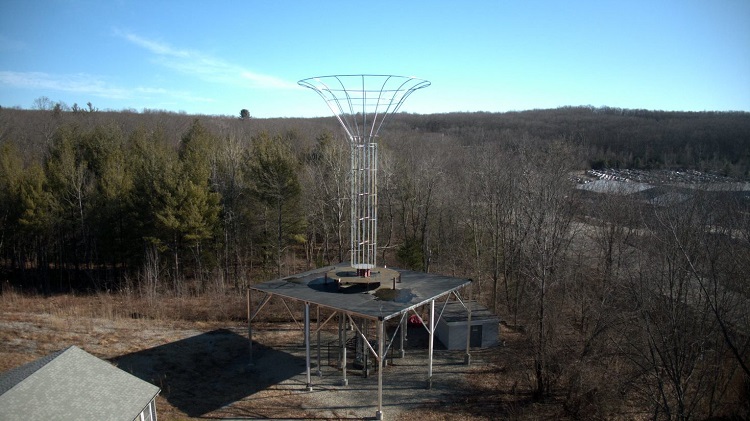
The FCC in March granted an application for a construction permit filed by WQVR(AM) 940 in Webster, Mass., requesting licensed nighttime operation.
This is noteworthy because WQVR has been licensed to operate during daytime hours with a High-Efficiency Broadband Antenna or HEBA, developed by Worldwide Antenna Systems.
The HEBA is a dual-feed antenna designed to have a much smaller footprint than a standard guyed tower with a quarter-wavelength ground system for a medium-wave antenna. WorldWide Antenna Systems partnered with WQVR, previously WGFP, to prototype different designs of the HEBA under experimental daytime operation. The station began full-time broadcasting with the HEBA during the day in December 2016 at 1 kW, and after its RF proof was accepted by the FCC, it was granted a license to operate with it during daytime hours in July 2018.
“The nighttime grant is the culmination of six years of research and we are thrilled to have the authorization of the FCC to validate this remarkable technology,” WorldWide Antenna Systems Managing Partner Tom Poulos said.
Using NEC-5 modeling software, WQVR’s engineering team — which includes the HEBA’s architect, Kurt Gorman, Isotrope’s David Maxson, Soundcart’s John Garrett and Loud & Clean Broadcast Science’s Grady Moates — ran nighttime interference analysis to confirm whether its interference contour was within the necessary FCC limits. It submitted its findings to the Media Bureau in February.
WQVR’s HEBA is 75 feet above the ground, situated on 2,500 square feet of land. With just one tee-joint welding, Poulos said the antenna has sustained through multiple New England nor-easters and severe weather outbreaks.
Poulos believes that with its reduced height, and no need for a large, buried ground system, the HEBA could be a way for AM stations to monetize the current property they operate from, which was the genesis of WQVR’s initial partnership with WorldWide Antenna Systems.
“There is also no longer a need to tune the station in the spring and fall because of the change in the weather,” Poulos said, which he believes could reduce station operating and maintenance costs.
WQVR is licensed to run 4 watts with its nighttime pattern. The station expects to receive a license to cover from the commission for transmitting from the HEBA after sunset in the next few weeks.
(Read the FCC’s nighttime authorization for WQVR’s High Efficiency Broadband Antenna.)


